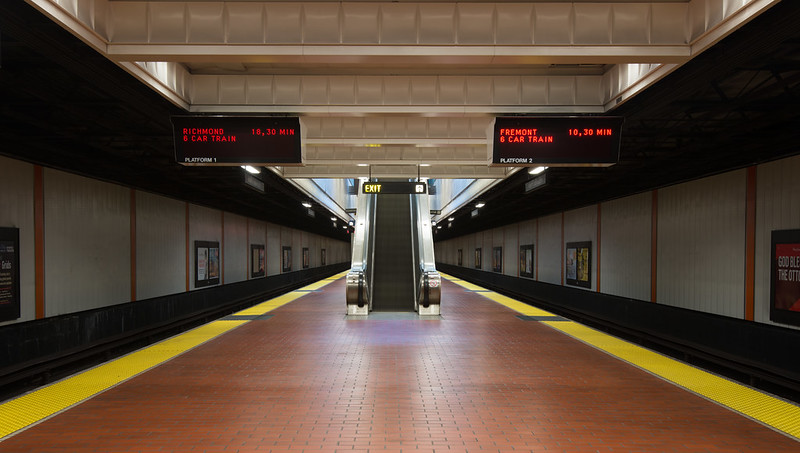
June 23, 2020
BART ridership has fallen less significantly at stations located in neighborhoods with a higher percentage of Black and Latinx residents. An analysis of year-over-year change in BART entries by station in the months following the statewide shelter-in-place order shows that ridership was less impacted at stations located in predominately Black and Latinx zip codes.
Station entries across the whole BART system dropped 93% year-over-year in May, but the loss in ridership was not consistent across all stations. Ridership at Orinda Station, which is located in a zip code where 72% of the population is white, saw a 97% drop in year-over-year ridership. In comparison, Richmond Station, which is located in a zip code where 75% of the population is Black or Latinx, saw an 82% drop in year-over-year ridership. This trend holds true across the system: the higher the share of Black and Latinx residents, the less significant the decline in ridership.
A high unemployment rate, shifts to remote work for much of the workforce, and cutbacks in service and frequency have all impacted BART ridership levels. The potential health risks associated with riding transit during the pandemic are a significant public health concern, and agencies are taking steps to ensure physical distancing and to make the transit experience as safe as possible. This analysis reveals that Black and Latinx communities are more reliant on transit post COVID-19 than white communities, indicating higher exposure to potential health risks. Ensuring that transit services do not contribute to the continued spread of COVID-19 is not only an economic or health issue, it is also a racial equity issue.